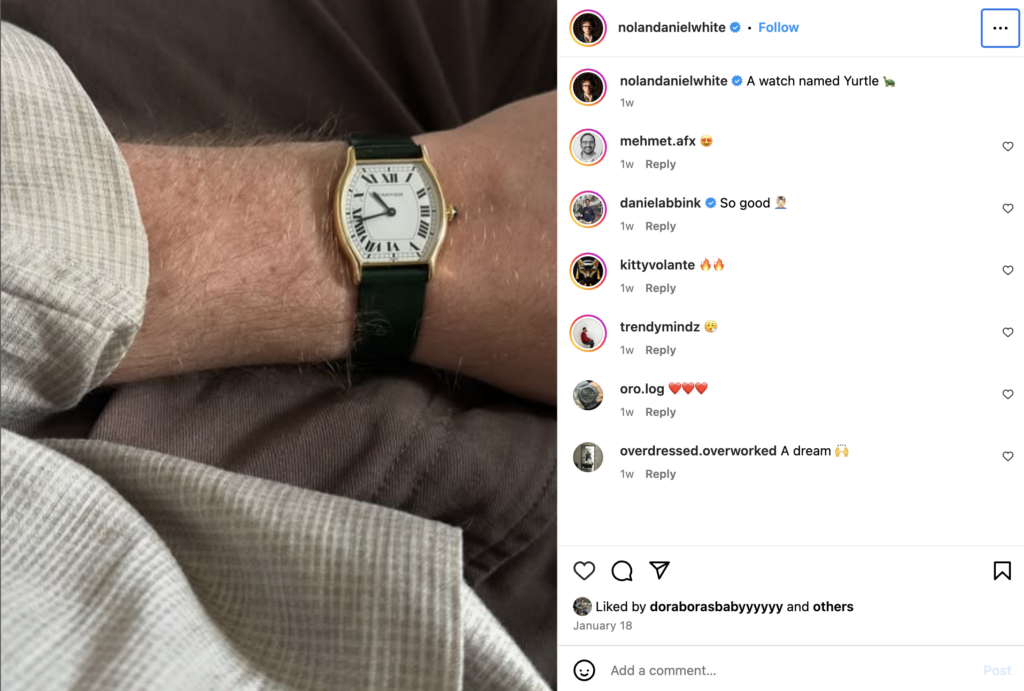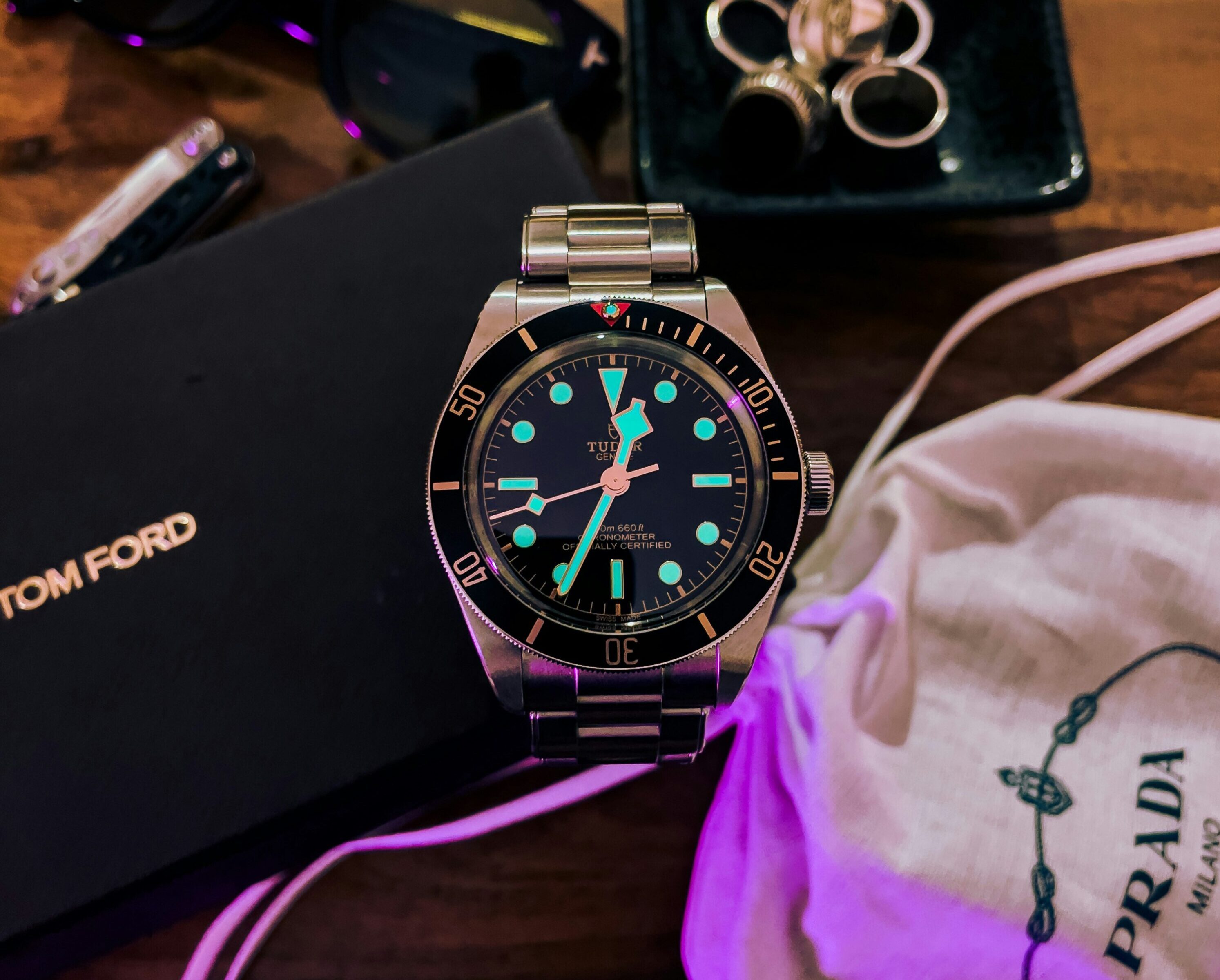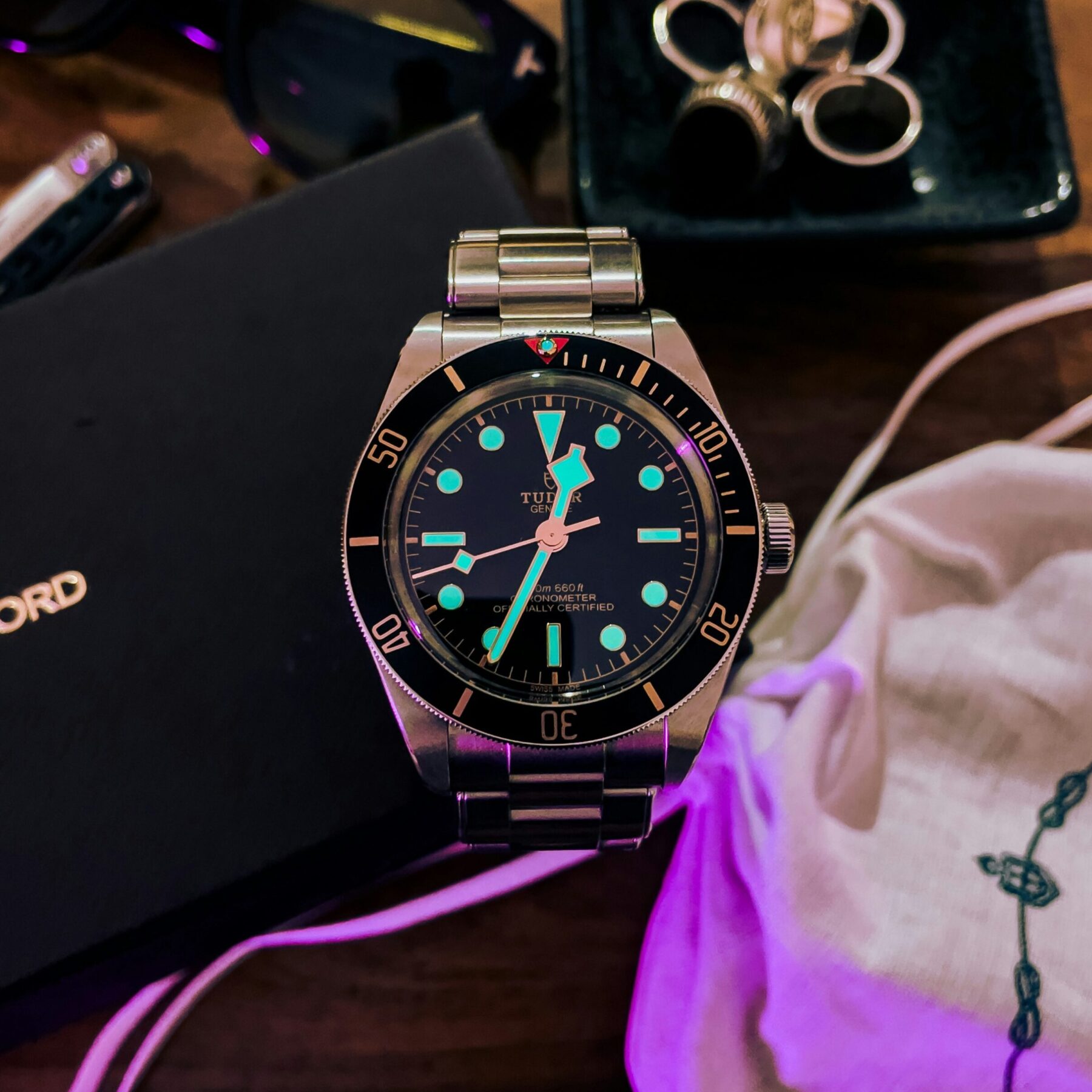Once upon a wrist, in a timeline not so long ago, the game of luxury watches had a different class of power players. Typically associated exclusively with an accomplished audience, the luxury watch rightfully symbolized a certain level of achievement—and a mandatory accessory for foreshadowing an early retirement.
Today, luxury watches—and luxury goods more broadly—have become widely associated with younger generations, which have taken the lead in driving taste and becoming a priority marketing demographic in the high-end accessory sector. The watch collection of a barely 20-year-old might outshine that of a retired orthopaedic surgeon who’s indulged in a passion for wrist bling.
It inspires the question: Is a newer generation attempting to build their asset portfolio through a different means? Is the emerging fascination with luxury watch-collecting evidence of a form of self-soothing via social media? Could this be a form of “doom spending,” a phenomenon connected to “doom scrolling,” where the urge to scroll mindlessly helps distract from a less-than-favourable social reality?
With traditional forms of wealth-building, such as creating a portfolio of assets, proving complicated for a new generation of third-culture kids, many have chosen to redirect resources from what are typically considered “financially literate” purchases to the dopamine hit of proximity to status. However, this growing community of watch collectors is, often, equally interested in watch-flipping. Their goal is not solely devoted to cultivating a personal collection to keep—they’re invested in using their knowledge, taste and purchasing power to generate a profit.
Their goal is not solely devoted to cultivating a personal collection to keep—they’re invested in using their knowledge, taste and purchasing power to generate a profit.
Social media stokes a rotation of trending styles, reviving an interest in archival models and heritage watchmakers. Vintage, art-deco-inspired Piaget has dominated the mood boards and wishlists of watch collectors in 2024. Jaeger-LeCoultre re-entered the arena of the luxury consciousness, with influencers reporting on the history of its decadent all-diamond bracelet watch, known as the Calibre 101, boasting the smallest mechanical watch movement in the world. Recently, Mark Zuckerberg’s $900,000 USD watch-collecting juggernaut, The Hand Made 1 by Greubel Forsey, went viral as he wore the piece to announce policy changes at Meta that would mark the end of fact-checking and content moderation on the platform.
Attitudes toward high-ticket luxury items reflect a destabilized reality. Many young luxury customers are less focused on sentimentality and more focused on the growing prevalence in the resale market across categories. It is a shift in attitude: a move away from an emotional attachment to material items, reflective of a new accepted truth based on an increased sense of volatility in the world.
Nolan Daniel White is a menswear content creator and creative consultant based in Montréal, Québec. With over 200,000 followers on Instagram, White has become a go-to voice in menswear commentary in the social space. A watch collector himself, he takes a few factors into his perspective.
Then there are people who are hitching another car onto their endless train of consumption, and eventually, they’ll get bored and move on to something else.
Nolan Daniel White
“There are a few intrinsic and alluring characteristics of the watch market that may make it more attractive relative to other status symbols, for example, clothing, cars, jewellery and vacations. A Rolex Submariner is quite durable when compared to a Hermès Birkin or an SLP Teddy Jacket. It takes less space and maintenance than a vintage Porsche 911 and has resale value unlike a vacation,” he says.
Undeniably, variables like the housing crisis and social media do factor into trends amongst young watch collectors, but motivations exist on a spectrum. He explains, “There are people who are passionately in love with watches because of the mechanical artistry, the engineering, the heritage. Then there are people who are hitching another car onto their endless train of consumption, and eventually, they’ll get bored and move on to something else.”
For Millennials and Gen Z, young adulthood has been an oscillation of various crises that feel ever-present. Even opportunities for escapism seem to be shrinking. “If economic conditions improve to the point where our generation has a meaningful stake in the future, perhaps that phenomenon will taper off,” says White.

Many young people, like myself—a Zillenial who graduated with a Master’s degree in fashion communication from Central Saint Martins in the midst of the global pandemic—continue to feel its aftereffects psychologically, economically, and perhaps even spiritually. As a result, environmental issues and conversations around sustainability have taken an unprecedented focus in fashion media and marketing alike.
Completing a degree specifically in the world of fashion journalism meant both a literal proximity to the luxury brands that define its meaning and a perceived proximity to its lifestyle. Around this time, later solidified by a too-long stint in sales at Dior, I became a vocabulary of its language: Birkin, Kelly, Tank, Datejust, Submariner. The words became a hologram. It was as if knowing these terms could invite you to orbit the secret world of the elite—one that felt empowered, unencumbered by financial restraint, and, as if by osmosis, you could join its ranks.
Luxury fashion, as I understood it, was a vehicle for understanding my dual identity. One facet, as a Canadian—an empowered but polite North American—and the complete context of a second culture at home, as a Croatian immigrant. While the majority of my elementary school student body was children with a third-culture background, the art of the major Italian names especially popular at the time—the sleekness of Armani, the vibrancy of Versace—felt like a reference point to explain the lushness and wonder of Europe I experienced on family trips “back home.” The glimpses into luxury I saw through my parents—their evening outfits at weddings, their Sunday outfits at church, and the small luxuries that were part of their daily rotation—stirred a sense of pride and dignity, and a special desire for others to see me as I understood myself and my heritage.
Get the
Three from 3
newsletter
Join our global community of sharp, curious thinkers to receive a carefully curated email of the three most important things to read, see and do this week.
Listen and learn.
Tune into Third Culture Leaders, a podcast hosted by our co-founder and publisher, Muraly Srinarayanathas.
Explore how leaders skillfully navigate multiple cultural landscapes, leveraging their diverse backgrounds to drive innovation and change.
Who would I be if I finally got the Rolex I wanted? Would I earn the fear and respect of those I seek validation from? Would I be more popular? Would I be more liked? Would I be happier?
By now, luxury marketing has long abandoned its main tactic of appealing to an older, established generation. Instead, it has integrated the dreams and attention spans of a younger audience, eager to close the gap between themselves and the suggestion of success or financial mobility that luxury goods and accessories can suggest.
The Jubilee bracelet of the Datejust I like winks at me through the window of the jeweller’s shop at every upscale mall or airport I pass. Who would I be if I finally got the Rolex I wanted? Would I earn the fear and respect of those I seek validation from? Would I be more popular? Would I be more liked? Would I be happier?
Maybe just a few diamonds. Perhaps I’d get the famous fluted bezel. Maybe I’d look down at its perfection and think, I’ve made it, even though all I did was hand over several thousand to a very happy sales associate. Perhaps, once I’ve embodied the look, the success and satisfaction my ambition seeks would finally arrive—even as the pillars that once supported my sense of competency and self-actualization crumble around me.

